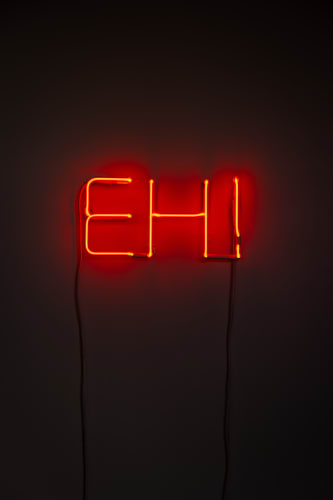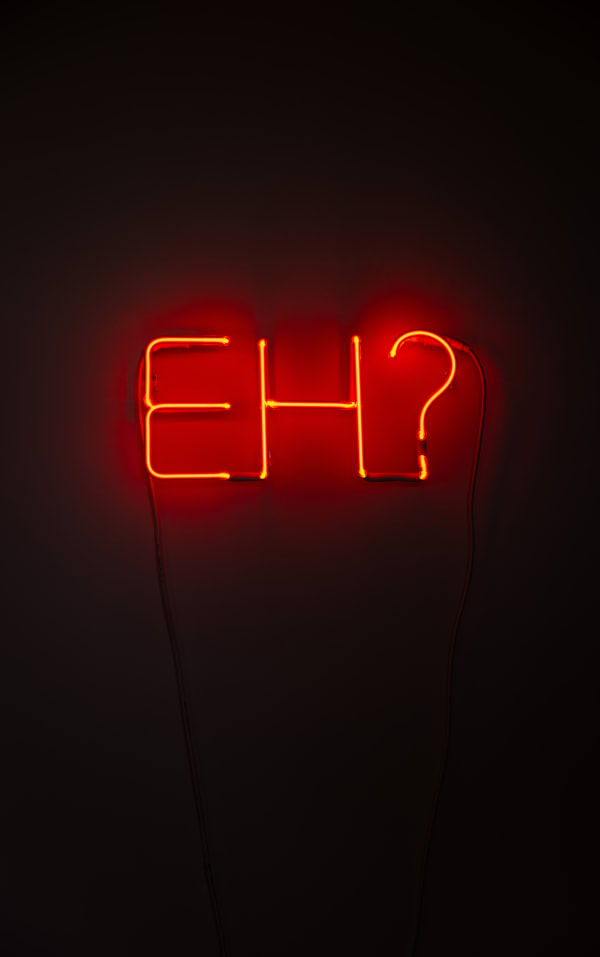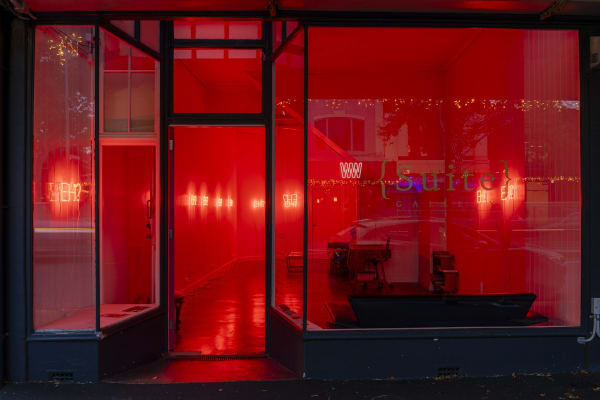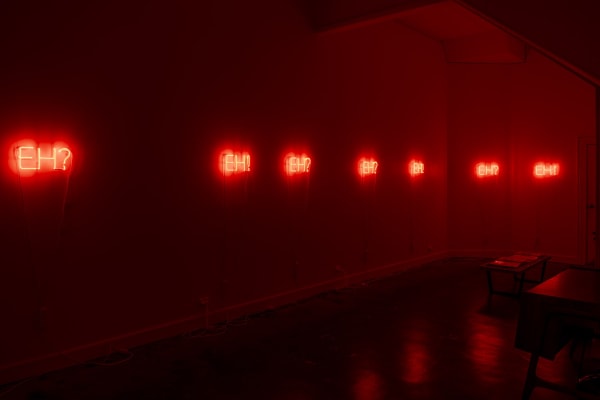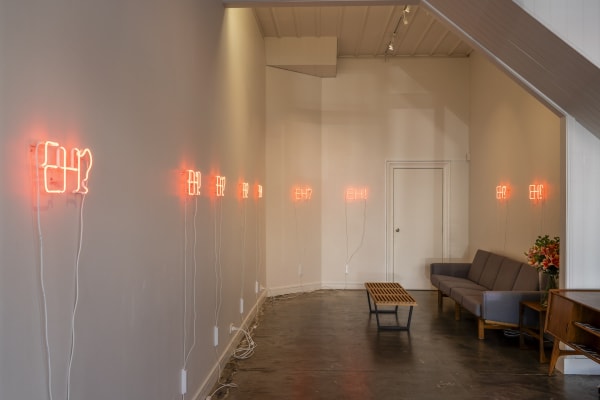Wayne Youle | Vernacular: {Suite} Ponsonby
“For such a tiny word it has many connotations: it can provide confirmation, indicate doubt, act as a question and can be used to show surprise"
In 1976 Colin McCahon painted the Scared series in response to a photograph of two young Māori men apprehensively entering Peter McLeavey’s Wellington gallery to view an exhibition of his own work. McCahon was struck by the image, and noted in a letter to McLeavey ‘that boy to the right going to unexplored land & the smaller fellow in the middle & me pushing a message neither of them have seen yet’.
One of the most significant images from the series is AM I Scared Boy (EH) which provides the inspiration for Wayne Youle’s new exhibition of neon wall sculptures. As Youle looked at the image, he imagined McCahon’s painted text as a subtitle to the photograph, possibly capturing the dialogue between the young men as the entered the gallery.
The use of the word (EH) is one of the most recognisable aspects of this important painting. It was McCahon’s nod to the vernacular and a way of conveying the alienation that the boys may have felt in an elite urban setting. A wariness heightened by the social dislocation many young Māori experienced after a generation of dislocation of cultural heritage and widespread relocation from their ancestral lands.
McCahon’s words have been previously been replicated and reworked by fellow artist, Peter Robinson, who created a number of works in the late 1990s with their roots in McCahon’s Am I Scared. In one painting, Robinson added a single character, turning the word scared to scarred -bringing his own narrative of colonial histories, racism and prejudice to the fore.
Youle has also focused on the word EH and its varied use in conversation.
“For such a tiny word it has many connotations: it can provide confirmation, indicate doubt, act as a question and can be used to show surprise. I want the works to talk to each other, the room to create chatter. Obviously no sound is involved nor required, instead we read the lights as words, with half having exclamation points and the other half with question marks at the end. The viewer can see them as two or more ‘voices’ in the space”.
“The way we primarily converse to each other today seems far more instant and temporary - I wanted the work to have an intensity about it and at the same time the objects themselves are fragile. With three sons, I hear the word EH every day, with both a question mark and exclamation point added. The word EH seems to ‘cover all bases’ in their contemporary communication’.
